AMD Trinity A10-4600M Laptop APU Review – Piledriver Arrives
AMD Trinity APUs Arrive w/ Radeon HD 7000 GPUs
AMD has been talking about their 2nd-Generation A-Series Accelerated Processing Unit (APU), codenamed Trinity, for well over a year. This week it shouldn’t come to a surprise to any of our faithful readers that AMD has finally launched this new APU! AMD says that this new APU features a much improved design over the previous generation of Llano APUs. AMD was able to improve performance and lower power consumption by moving over to the newly designed ‘Piledriver’ CPU cores and implementing AMD Radeon HD 7000 series graphics inside the APU.
If you have been following the AMD and Intel processor battle in recent years you likely know how this will end up as the story line has remained the same for years. Intel has dominated the x86 processor oriented benchmarks and AMD will destroy when it comes to GPU accelerated applications thanks to their Radeon graphics engine. Will the changes that AMD made for Trinity be enough for the company to compete with Intel Sandy Bridge and Ivy Bridge processors?
AMD sent us a Trinity powered notebook that is powered by the AMD A10-4800M ‘Trinity’ APU to find out!
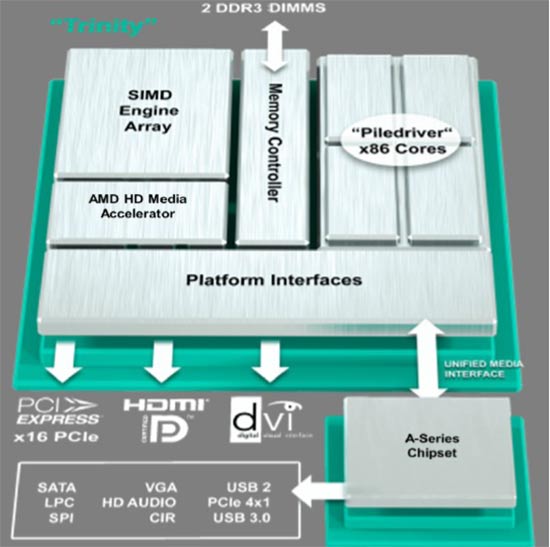
AMD is very proud of the 1.3 billion transistors that are on this die
that is 246mm2. The original APU that was called Llano was 228mm2 and featured updated ‘Stars’ cores from the original Phenom desktop processor. These cores were pretty old in the big scheme of things and were often blamed for AMD’s poor IPC (Instructions Per Cycle) performance. To enhance processor performance skipped the desktop ‘Bulldozer’ core architecture and is using ‘Piledriver’ cores on Trinity! By doing this AMD is effectively skipping a generation and moving on to the newest architecture that AMD has to offer. On the GPU side of the processor AMD managed to beef up DX11 performance by using Radeon HD 7000 series GPU technology! This is a pretty big deal and it might be a way for AMD to catch up to Intel!
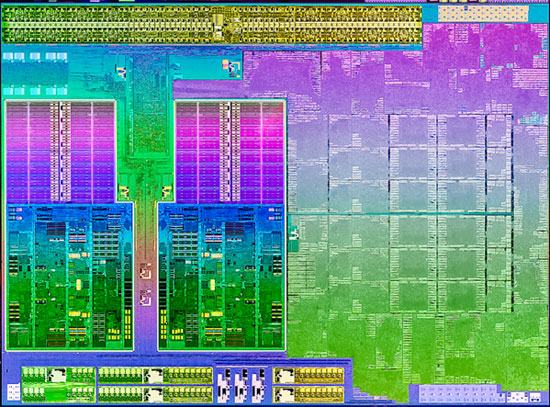
That said from a die size perspective things aren’t that impressive as AMD is still using the 32nm SOI manufacturing processor. To John Q. Public the Trinity die shot above might not mean much, but the die size is critical. Last month Intel released a new generation of processors (Ivy Bridge) and those parts are the first to be made on the 22nm process. Intel Ivy Bridge processors have 1.4 billion transistors in a die size that is just ~160mm2. This means that AMD Trinity APUs have die sizes that are roughly 55% larger and that means lower dies per wafer and ultimately higher production costs.
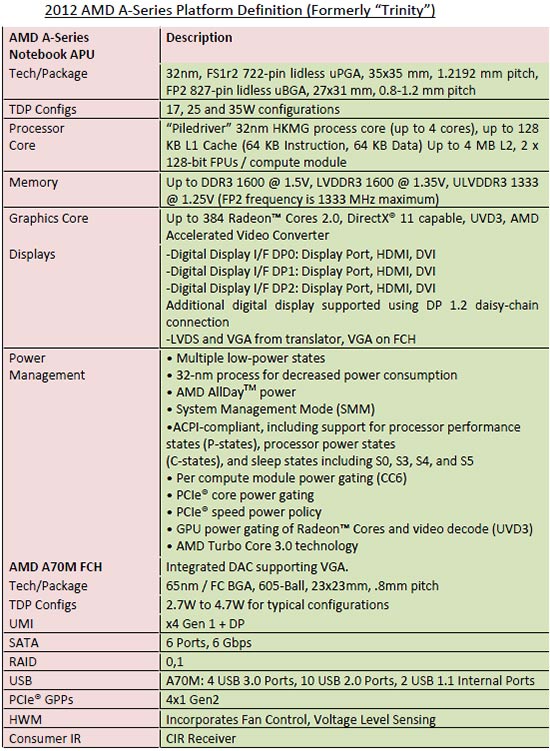
This is the full platform definition table for Trinity for those that would like to know the specifics on the platform.
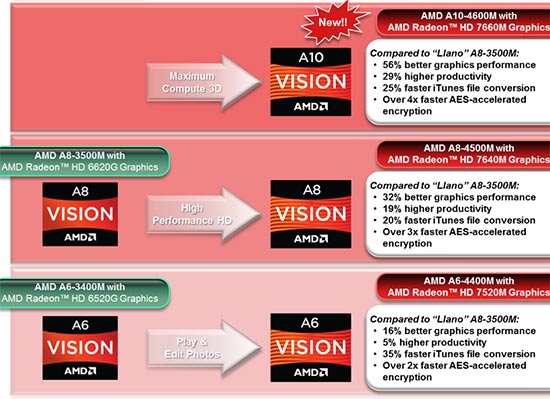
AMD announced five new APUs this week and we wanted to briefly touch more on those before we take a deeper look at the new features and move on to benchmarking. AMD has kept the nomenclature close to what they did with Llano, so it’s pretty easy to understand. As you can see from the AMD marketing slide, the performance improvements are rather substantial!
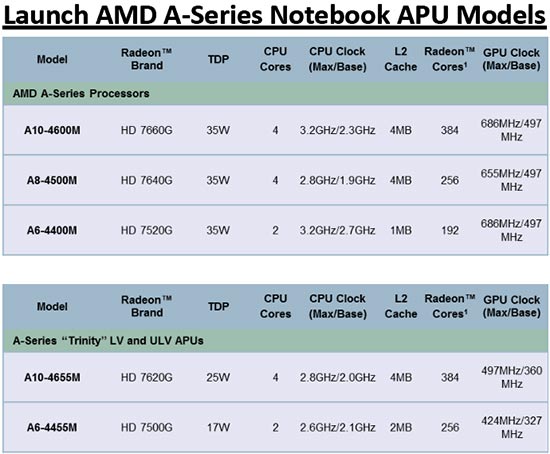
The entry level standard power AMD Trinity mobile processor is the A6-4400M, which is a dual-core CPU with a Radeon HD 7500G graphics engine on board consisting of 192 Radeon cores and a TDP 35 Watts. From there you move up the A8-4500M quad-core processor with 256 Radeon Cores. The flagship CPU is the A10-4600M Trinity processor, which is a quad-core processor with Radeon HD 7660G graphics (384 Radeon cores). This APU has a base clock of 2.3GHz and a boost clock of 3.2GHz, while the AMD Radeon HD cores run at a clock speed of 686MHz. Yes, the Trinity processors finally have boost clocks!
You also have low voltage (LV) and Ultra Low Voltage (ULV) parts that include the A10-4655M and the A6-4455M that have a max TDP rating of 25W and 17W, respectively.

Comments are closed.